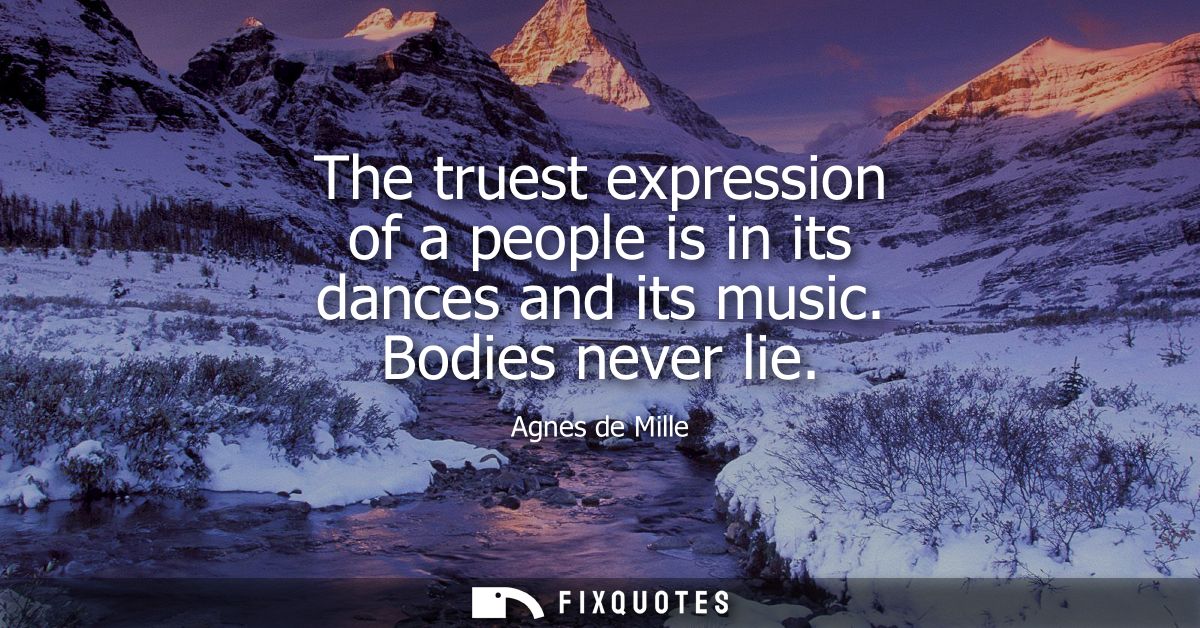"The truest expression of a people is in its dances and its music. Bodies never lie"
About this Quote
Human culture finds one of its purest forms in the way communities move and make music. Words can be shaped, twisted, restrained by custom or censorship, but the rhythms and gestures of dance bypass the limitations of language. Dances and music arise from everyday lives, beliefs, struggles, and joys of a people, blending history with feeling. When people move to traditional rhythms or invent new choreographies, they carry a lineage of inherited stories, aspirations, and pain. The music echoes celebrations and mourning, ritual and work, becoming an audible thread through the heart of a society.
The body, according to Agnes de Mille, cannot deceive in the same way that words or even images might. Everything felt, grief, love, oppression, solidarity, filters through the music of a culture and is imprinted onto the bodies that respond to it. In every tap, spin, stomp, or sway, something deeply real is revealed. There is no hiding the vibrancy, resistance, exhaustion, or desire in movement. Even when interpretations change over generations, the emotional core persists: bodies in motion tell truths that may be uncomfortable, beautiful, or liberating.
Musical expressions also expose the shared hopes and values of communities. Rhythms passed down through generations retain the flavor of their origins, even as they adapt to new environments. Through melody and harmony, communities remember their suffering and joy, their migrations, and their dreams. Dance becomes a visual language, music an aural tapestry, their synthesis a map of the collective psyche.
Because the body cannot easily mask its truth, the collective emotional landscape of a people is most plainly seen and heard in their dances and music. To watch a people dance, or to hear their music, is to witness authentic life and spirit that defies formal articulation, yet resonates universally.
More details
About the Author

